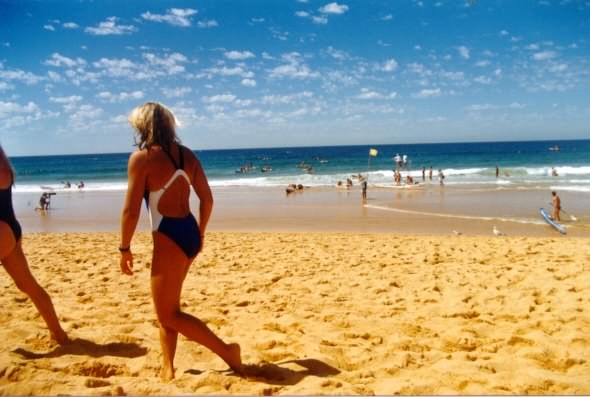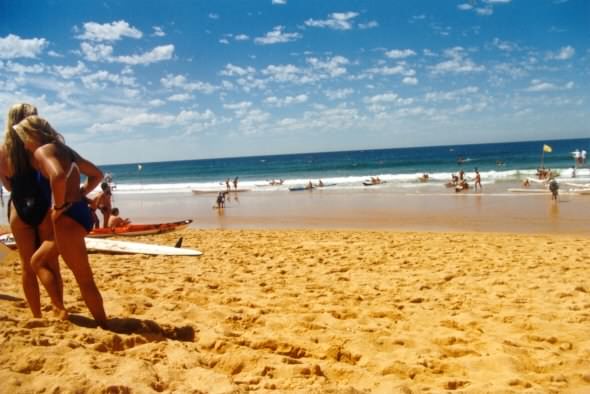15. March 1998 10:54
by Rene Pallesen
0 Comments
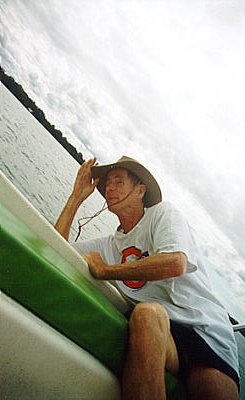
During my first year in Australia, after coming from Denmark, I was contracted out to work at Port Macquarie - a quiet, but beautiful and peaceful seaside town a few hours north of Sydney. The first pictures were taken in Port Macquarie during Easter 1998.
Lance, Anne and Graham, some good friends of mine, decided to do some exploring around the area...
Graham here, on the right, The Admiral himself... (also called "Wobber") "Is that a chicky-babe in the water ?"
The photo is taken on "Kermit" (Note, the green seats...) in the river at Port Macquarie.
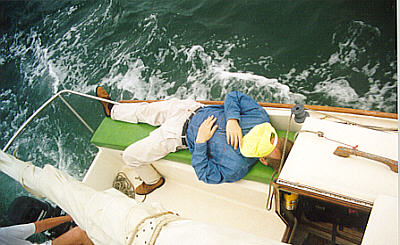
Lance seasick ???? No, just a little tired !
This is one of many photos I have of Lance sleeping - he has a knack for taking a nap just about anywhere - just ask Anne! *smile*
It's a great day to sail on "Kermit".

Whereas, who do we have here?
Me! I love sailing, and as usual, like to be a'head' of things...
"Clear water ahead Navigator?"
"Aye-Aye Admiral!"
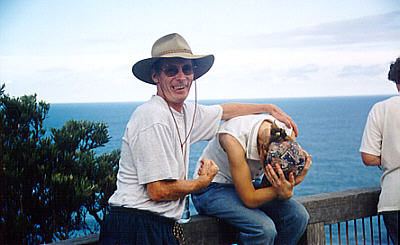
"The Admiral" is giving Anne a good whacking.
Poor Anne...
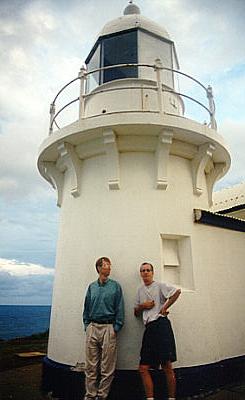
Lance and The Admiral in front of the lighthouse at Port Macquarie
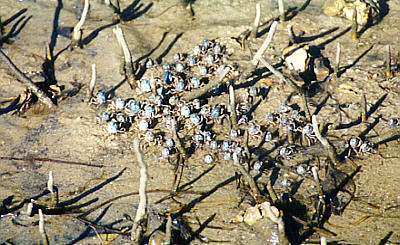
In the mangrove at Port Macquarie, there are millions of these small blue crabs (Taste like shit). It's pretty amazing though - crabs do not exist only on a beach. They live wherever there is enough water and they can burrow quickly and easily away from danger.
The photo above is taken on a sandbar in the river at Port Macquarie.
There are also a lot of pelicans in Port Macquarie. I managed to get a picture of one flying. And one yawning!
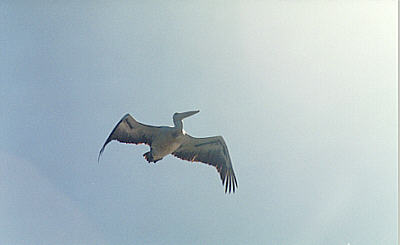 |
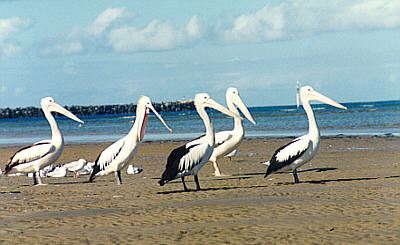
|
There are quite a few pelicans here in Narrabeen, on Pittwater Rd - a main street near where I live. Narrabeen lakes draws its salt water from the sea, and at one point on Pittwater Rd, there is a bridge. This is where I see most of the pelicans - perched on top of the flat heads of street lights! It's quite funny to see them there, and have never managed to get a photo of this yet, as I usually see them when I am driving over the bridge.

We went bushwalking in the mountains and forests at Port Macquarie and found this beautiful rockpool. We used the opportunity to go for a swim.
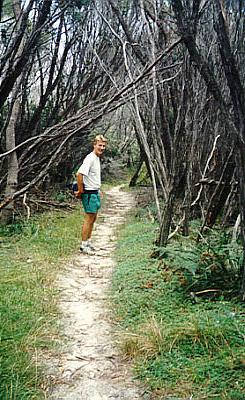
Off the beaten track in the forests around Port Macquarie!
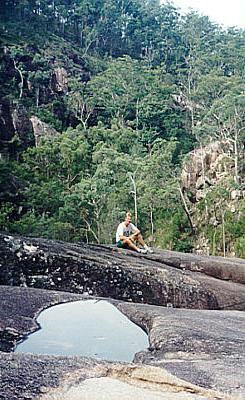
Moi!
One of the few pictures of me (as you will notice in this whole website). I tend to prefer taking pictures of other people and places - but my girlfriend is trying to remedy that! (she's still trying not get blurry pictures...)
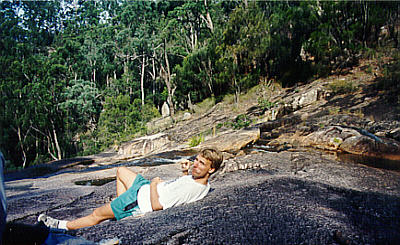
As you can see, this place is really good for getting comfortable, enjoying my lunch, no worries, good place to get a bit of sleep...
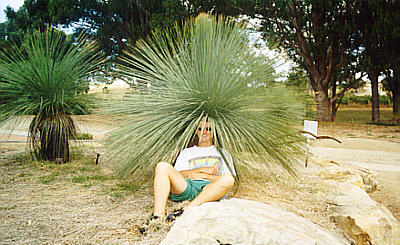
Like my new haircut?
I wanted to do something radical. I needed a change, I wanted people to look at me when I was walking down the street. So decided to change my hairstyle. By the way, you like it green? I can't be a dumb blond forever...
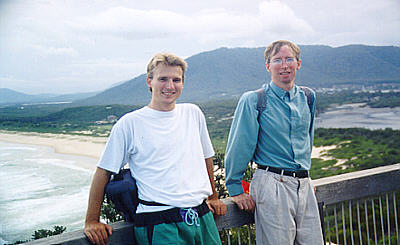
A picture of Lance and I with the beaches at Port Macquarie and one of the Brothers in the background !
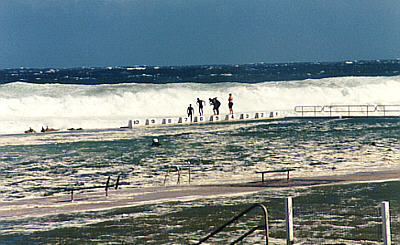 There was a storm in Newcastle. These were the biggest waves I had ever seen - some were 7-8 meters high. The waves were washing all the way up to where I am standing taking the picture.
There was a storm in Newcastle. These were the biggest waves I had ever seen - some were 7-8 meters high. The waves were washing all the way up to where I am standing taking the picture.
The kids in the photo were waiting for a big wave to hit them and wash them into the rock pool. You know the big wave coming towards them? They were still a couple of hundred meters away from it...
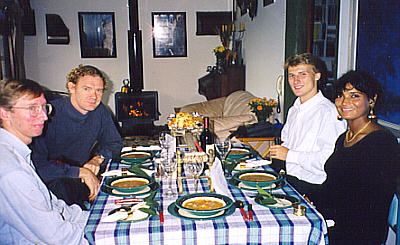 Henrik, Lance and I made a bet with Anne about whether or not we would be able not to use a computer in our sparetime for two weeks while we were up in Newcastle. We accepted the bet and won it simply because it was impossible for us to lose since we didn't have access to any computers!
Henrik, Lance and I made a bet with Anne about whether or not we would be able not to use a computer in our sparetime for two weeks while we were up in Newcastle. We accepted the bet and won it simply because it was impossible for us to lose since we didn't have access to any computers!
That meant that Anne had to cook us a dinner... Australian Style!
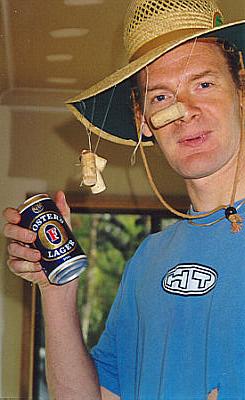
Aussie?
We had to dress "Australian style" for the dinner (at least to start with). Reckon it is Aussie with a billabong hat? (Need some flies for the corks to chase away). But it is DEFINITELY Aussie with that holey surfie t-shirt and a Fosters (disgusting) in hand!
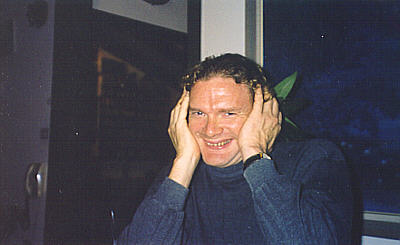
Can't see, can't hear and can't talk, who am I?
No actually he was trying to wear his wife's earrings but didn't want it on a photo!
I have often said that Port Macquarie was a beautiful place, but it is much too quiet for me in the long run. Working there during 1998 was good, but I was also glad to be back in Sydney!
15. February 1998 10:54
by Rene Pallesen
0 Comments
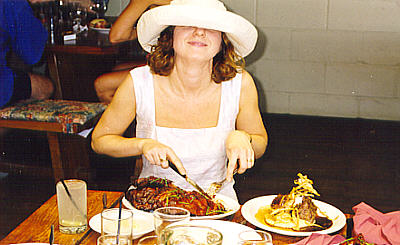 We celebrated Anne's birthday at a restaurant called Pete's Bite. The only access to the restaurant is by seaplane or boat. It is located 2 hours north of where I live.
We celebrated Anne's birthday at a restaurant called Pete's Bite. The only access to the restaurant is by seaplane or boat. It is located 2 hours north of where I live.
The food is marvelous and bloody expensive. It is definetely worth trying (once)!
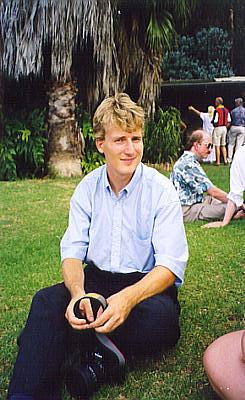 It was 40-45 degrees that day and no wind so everybody moved out on the lawn in the shade of palms!
It was 40-45 degrees that day and no wind so everybody moved out on the lawn in the shade of palms!

So this is what a heat stroke looks like !
15. March 1997 11:14
by Rene Pallesen
0 Comments
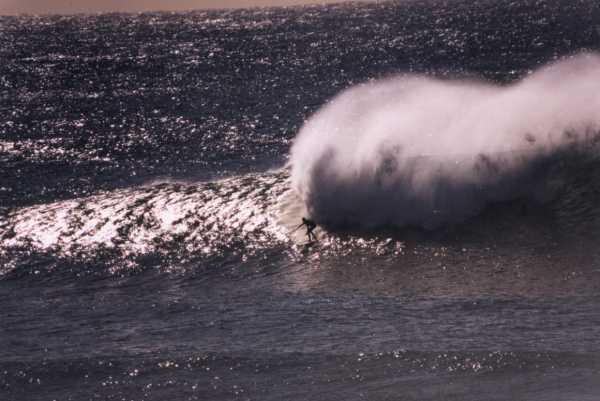
Narrabeen Beach . . .
My apartment is situated right on Narrabeen beach - one of the nicer and quieter northern beaches.
Now that I've said this, you're probably wondering about that surfer in the middle of that photo... and is the wave real?
You betcha!
I even have a photo of this surfer being 'chased' by this HUGE wave, on the wall in my apartment.
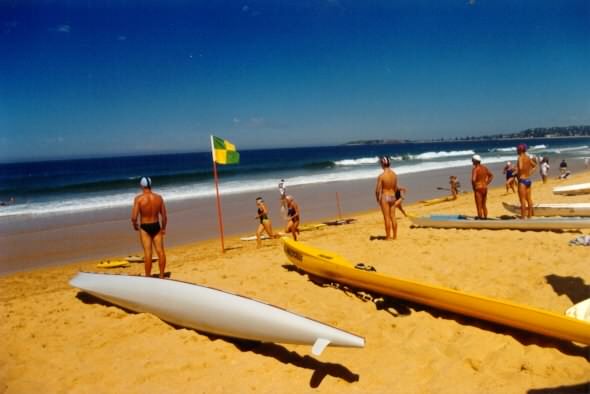
Narrabeen is renowned for its great surf and dangerous rips. Many famous lifesavers come to surf at this beach. However, usually after a big storm, the beach is closed as the waves can get pretty rough and dangerous rips pull you out to sea.
These photos were taken outside my apartment during the annual National Surf and Lifesaving competition.
